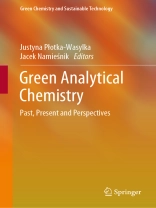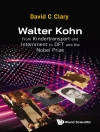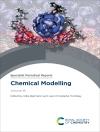The book explains the principles and fundamentals of Green Analytical Chemistry (GAC) and highlights the current developments and future potential of the analytical green chemistry-oriented applications of various solutions. The book consists of sixteen chapters, including the history and milestones of GAC; issues related to teaching of green analytical chemistry and greening the university laboratories; evaluation of impact of analytical activities on the environmental and human health, direct techniques of detection, identification and determination of trace constituents; new achievements in the field of extraction of trace analytes from samples characterized by complex composition of the matrix; “green” nature of the derivatization process in analytical chemistry; passive techniques of sampling of analytes; green sorption materials used in analytical procedures; new types of solvents in the field of analytical chemistry. In addition green chromatography and related techniques, fast tests for assessment of the wide spectrum of pollutants in the different types of the medium, remote monitoring of environmental pollutants, qualitative and comparative evaluation, quantitative assessment, and future trends and perspectives are discussed.
This book appeals to a wide readership of the academic and industrial researchers. In addition, it can be used in the classroom for undergraduate and graduate Ph.D. students focusing on elaboration of new analytical procedures for organic and inorganic compounds determination in different kinds of samples characterized by complex matrices composition.
Jacek Namieśnik was a Professor at the Department of Analytical Chemistry, Gdańsk University of Technology, Poland. Justyna Płotka-Wasylka is a teacher and researcher at the same department.
Daftar Isi
History and Milestones of Green Analytical Chemistry.- Teaching Green Analytical Chemistry.- Analytical Laboratories: Trends and Future Perspectives.- Evaluation of Impact of Analytical Activities on the Environmental and Human Health.- Direct Techniques of Detection, Identification and Determination of Trace Constituents.- New Achievements in the Field of Extraction of Trace Analytes from Samples Characterized by Complex Composition of the Matrix.- “Green” Nature of the Derivatization Process in Analytical Chemistry.- Passive Techniques of Sampling of Analytes.- Green Sorption Materials Used in Analytical Procedures.- New Types of Solvents in the Field of Analytical Chemistry.- Green Chromatography and Related Techniques.- Fast Tests for Assessment of the Wide Spectrum of Pollutants in the Different Types of the Medium.- Remote Monitoring of Environmental Pollutants.- Comparative Greenest Evaluation.- Quantitative Assessment.- Future Trends and Perspectives of Green Analytical Chemistry.
Tentang Penulis
Jacek Namieśnik (1949-2019) obtained his doctorate from Faculty of Chemistry of the Gdańsk University of Technology at Gdańsk (GUT) in 1978 Ph D (public presentation of thesis entitled: “Determination of the content of total carbon and total organic carbon in atmosphere”). He became a Doctor of Science in 1985 (presentation of the thesis entitled: ‘Preconcentration of the organic pollutants from the atmosphere’). He has been at GUT since 1996 as a professor of analytical chemistry. From 1996 to 2002, and from 2005 to 2012 he was a Dean of Faculty of Chemistry, Gdańsk University of Technology. He is the Head of Analytical Chemistry Department since 1995. At this time he is a Rector of Gdańsk University of Technology (2016-2020). Among his current interests are the elaboration of new analytical procedures for determination of trace and ultratrace constituents in samples characterized by complex composition of the matrix, design and testing of specific (fit for purpose) analytical units and measuring devices, and production of new types of matrix-free reference materials.
Justyna Płotka-Wasylka (born 1986) graduated from the Gdańsk University of Technology with a Ph.D. in Chemical Science in 2014, after which she started work at the Gdańsk University of Technology (Department of Analytical Chemistry), firstly as an assistant (2014-2015), and then as an adjunct ( 2015- today). Her research interests include green analytical chemistry, elaboration of new analytical procedures for bioactive compounds determination in food and alcoholic beverage samples, the application of microextraction techniques in sample preparation process, the application of spectroscopic techniques to metals determination in food and alcoholic beverage samples, the application of gas chromatography-mass spectrometry to bioactive compounds determination in food and alcoholic beverage samples.












